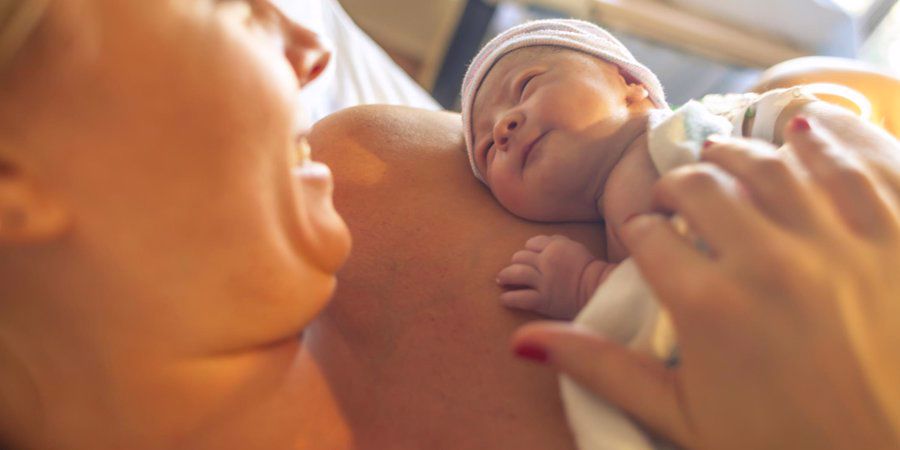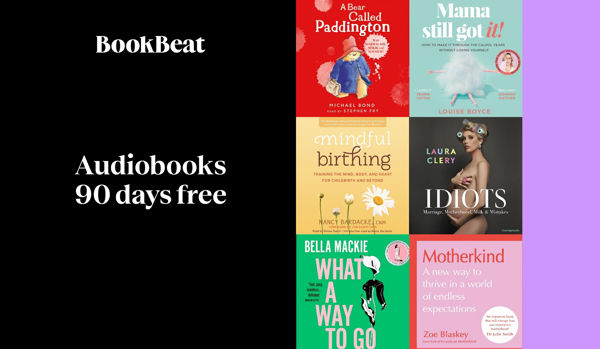When you are pregnant, you may not have given much thought to where you are going to give birth to your baby and what type of birth you would like. Although hospital births are the most common, there are other options available and giving birth in a hospital doesn’t mean that you’ll be strapped to a bed. Here’s our guide to the most popular types of birth to help you with your choice.
[Read more: Tips on Choosing a Birthing Plan]
Hospital births
According to the Office for National Statistics (2001), 98% of British women give birth in a hospital but things have come a long way since Call the Midwife. Obviously, the biggest benefit from giving birth in a hospital is having a lot of staff around you to support you at every step, plus specialist expertise and facilities if you do need them. You’ll also have access to all of the pain relief options.
[Read more: To Epidural or Not To Epidural]
If you are considering a hospital birth, it's a good idea to have a tour or research online into the facilities and procedures at your chosen hospital. If there are certain aspects of your birth plan that you feel particularly strongly about, check these with your midwife or the hospital in advance. This should include where you will be located for the actual birth and for recovery afterwards. For example, you may be in a private birthing room but moved to another ward after birth. Your hospital may be able to offer a private room for your entire stay under certain circumstances. Also look into what the visitor policies are, as there may be restrictions on the number of visitors, timings and whether children are allowed.
Birth centres
A birth centre is kind of a halfway house between home birth and hospital birth. They are less ‘medical’ than a hospital but do offer a certain level of care. They are NHS run and most offer birthing pools, complementary therapies and family accommodation. Birth centres are not available in every area, so you may need to travel a distance to your nearest one. Bear this in mind when you are booking yourself in, and make sure that your travel options are available from 36 weeks.
Like with home birth, using a birth centre is suitable for women with low-risk pregnancies and you have a good chance of a straightforward delivery. A birth centre will not be able to offer a full range of pain relief or any special assistance with the birth (such as caesareans or assisted delivery). If you do need any extra medial attention you would be transferred to hospital. You will receive more 1 to 1 care in a birth centre than in a hospital, which can be useful for after the birth for aspects such as breastfeeding.

Home Births
Home births have grown in popularity in recent years and are often the first choice for women who have already had one birth. Home births are suitable for women who have a low-risk pregnancy and no complications expected with birth. It may be the case that an alternative birth method is advised, even if you have already had a successful home birth.
Having a planned home birth does not need to be difficult but you will need to make sure you are prepared, and well in advance of your due date. The room you choose to give birth in will need to big enough for you, your midwife and your birthing partner to move around in. It should be a suitable temperature, not too warm or too cold. It’s ideal to cover the floor with a rubber mat or old sheets, but remember that sheets will not fully protect a carpet underneath.
If you are planning a water birth at home, make sure that the birthing pool will fit into your chosen room and there is enough space to move around it. Ensure that you can fill it up with warm water easily, you may need a hose to connect to the tap. You will need lots of sheets or towels to cover any spilt water.
You won’t be able to have an epidural during a home birth but you will have access to gas and air, and possibly pethidine. You can talk through your pain relief options with your midwife. At all times through the birth, your midwife will monitor certain things such as your blood pressure. If they have any concerns with how birth is progressing, they may suggest an alternative treatment.
During the birth, if there are any complications your midwife will arrange for you to be transferred to hospital. This will happen via ambulance, with your midwife accompanying you to the hospital. You may want to consider having a bag packed ready to take with you in case this does happen.
Birth Options
In a hospital birthing room
There are many different positions for you to give birth in, and it is worth investigating a few before you’re caught up in labour. Try watching videos online or programmes featuring real births to give you some ideas.
Your delivery bed will be fairly basic, and you do not use to have to use it if you are not comfortable doing so. You can lie down or sit up in the bed, or lean up against it. There may be stirrups available for you to put your legs up in on the bed, but this is quite an old-school method of delivery. You could also try squatting or kneeling on all fours, these positions can be comfortable as you take advantage of gravity. It may be possible for you to bring extra equipment in with you to the hospital, such as a birthing ball.
It may be possible for you to choose a water birth or to use hypnobirthing to assist your birth. These are available at a number of hospitals and birth centres, although they may not be able to be guaranteed if there is high demand for these services when you arrive.
Water births
Water births are considered to be much less stressful for your baby when they are born, as they are being born into a similar environment to the amniotic fluid in your womb. For you, it can reduce the need for pain relief and be a more relaxing experience than in a hospital room. When the baby is born the water is not dangerous for them, as they will start breathing once they are exposed to the air. The health and safety risks of water birth are actually very small.
[Read more: Why I'd Always Recommend a Water Birth]
Hypnobirthing
The premise of hypnobirthing is that you will be calmer and less stressed by using hypnosis during your labour and birth. It uses particular language to refer to the stages of birth, to envoke a more positive attitude about what is to come. Hypnobirthing experts claim that using the techniques can give a shorter length of first stage labour and reductions in the intensity of pain felt and the level of fear and anxiety after birth.
Hypnobirthing techniques can be learnt through face to face classes, or online courses, books, podcasts and apps. The techniques include suitable labour and birth positions, methods for self-hypnosis and deep relaxation and breathing techniques for labour. It can be helpful to involve your birthing partner in your hypnobirthing preparations so that they can act as a prompt for you if needed.
Hypnobirthing is often recommended for women who have previously had a traumatic birth experience or are extremely anxious about labour and birth. It aims to reduce the amount of adrenaline flowing through your body during labour, which can impact on the muscles in your womb and make labour longer and harder. The techniques also help your body to produce oxytocin and endorphins, both of which help you feel less stressed. Hypnobirthing is supported in the majority of birth centres and also in some hospitals through third-party organisations.
Giving birth is the last stage of your pregnancy journey and the start of your life with your new baby. Whilst it is unlikely to be the magical fairytale experience that you see on TV and films if you feel in control of your birth options it can make the process less stressful. Make sure that you have researched your options well in advance and that you are happy with your final choices. At the end of the day, it is your body and your baby, so you need to feel as comfortable as possible. As with everything to do with pregnancies and babies, what worked for your friend or family member may not be the best option for you.
[Read more: The Shit They Don't Tell You About Labour]




